#var var vari
Explore tagged Tumblr posts
Text

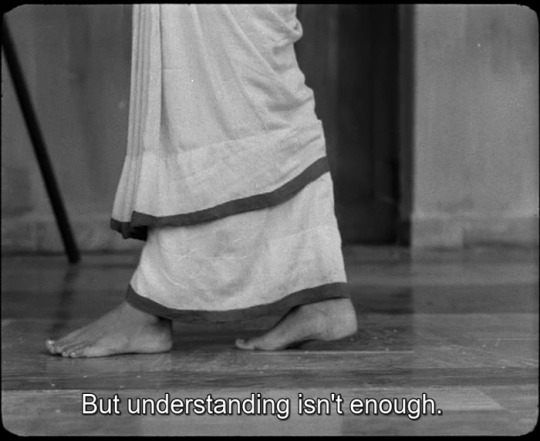
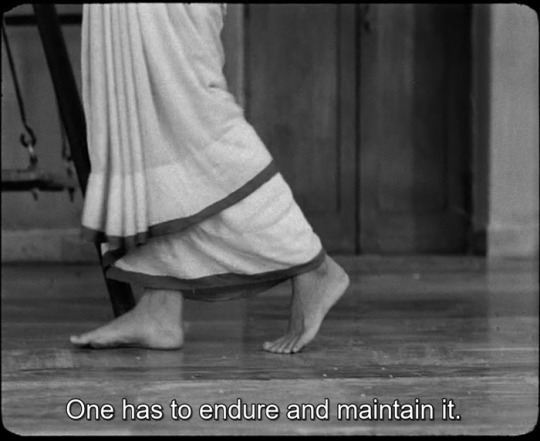
Kumar Shahani - A Ship Aground (1988)
1K notes
·
View notes
Text
as much as i love writing it does mean that i must regularly wrangle the pleasure center in my brain into submission. no you cannot go back to coding because you still have some routes to finish even though i knowwwww you are dying to see how variations work outside of your word processor. yes i know that you keep coming up with exciting ideas that you want to flesh out but you have to finish writing the scenes that will get you there. blease.
#ari speaks#oc: tmf#i think i gotta make a list of the routes that i still have left to finish out/think if it's really necessary to keep them#bc initially my thought for the prologue was that you pick 1 of 2 directions and it gives you one route to go on.#both lead eventually to the same objective.#but in reality i have almost finished route 2 and that's already got several vars.#so it's like 2(a)[almost entirely unfinished] 2(b)(1) 2(b)(2) and 2(b)(3)#these lead to 3(a) 3(b) or 3(c). which is really 3(a)(1)->3(a)(1)(i) and 3(a)(1)(ii) and so on and so on.#all of the variation already there accumulates probably to a good 20k words at least. so is it really Necessary for me to create route 1?#or even route 2a? b/c i'm not even sure that 3(a) would connect directly to 2a. but also i'm like BUT YOU'RE NOT VARYING THING ENOUGH.#girl help. i like doing this but i also feel very stupid.
0 notes
Text
Flow (2024)
So, just watched the movie Flow (2024) or Straume, as it is called in Latvian, and... Oh man this got my brain going with so many thoughts, feelings, questions, but just over all happy for this film. And happier that it is getting recognition for the work.
I cannot recommend it enough for people to at least try it as it is a different take on some tropes and because it is all animals, allows the story teller in all of us to imagine with is going on in the animals minds and personalities.
Small spoiler that the ending is bitter sweet, but even so, it is a movie that will make you think about the circle of life, the ebbs and flows (pun intended) of living and the courage to keep going.
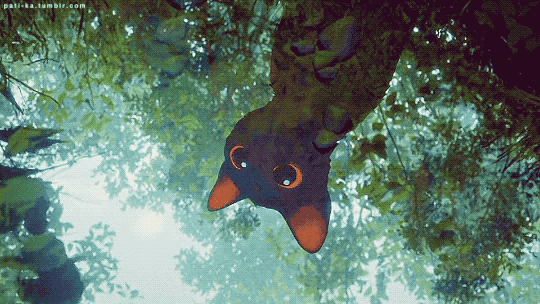
And small hint that I feel needs to be address, thanks to my Latvian heritage, it is not lost to me the significance of the black cat. Going Latvian for a moment:
Režisoram Gintam Zilbalodim liels paldies par šīs filmas tapšanu! Ir tik iedvesmojoši redzēt, ko tu vari darīt ar komandu un atbalstu, kas tev bija, un, cerams, redzēt, cik talantīga var būt Latvija. Lai gan es neesmu no turienes, Latvija ir mana sirdslieta, un man patika to redzēt, pat ja filma bija universālāka. Un nezinu, vai tas bija domāts, bet, redzot melno kaķi piestātnē kā Rīgā, tas man noteikti lika pasmaidīt. Vēlreiz liels paldies par jūsu brīnumstāstu un, cerams, redzēsit vairāk!
That is all! Please go see it! As a parting, have sleepy kitty
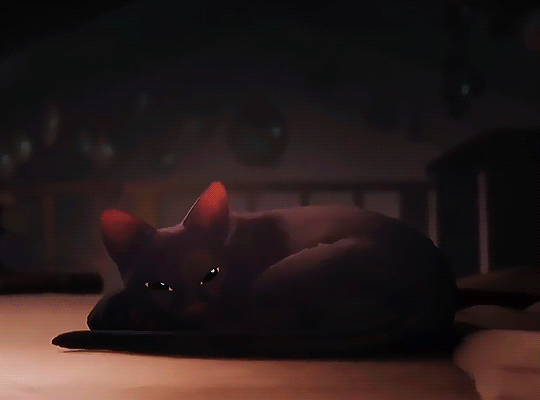
72 notes
·
View notes
Note
okay, monster!au characters reaction to Yuu(s) having hiccups. Like the high pitch squeaky toy type of hiccup. I feel like it would be seen as cute to concerning by everyone depending on how long they last.
Hiccups can be extremely annoying to the one experiencing them (and sometimes be painful), but highly entertaining to observers! 😆 I remember at one point that my nephew had a little trick to get someone to stop having the hiccups by asking them a completely random question, like, “What did you say about [insert random thing]?” and the sheer confusion and attempt to clarify what was going on would end up stopping the hiccups!
The trick kinda loses its effectiveness when you use the same phrase over and over again though, so shaking it up a little might work!
Anyway, it’s not uncommon for animals to get the hiccups either, though the pitch and duration will vary. As such, most monster species experiencing them tend to be less vocal than us humans. Now imagine that Yuu gets these high-pitched hiccups in the middle of class one day. >v>
/--------------/
Yuu: *stirring their cauldron in potionology* “How’re the ingredients coming along, Grim?”
Grim: “Mrrrgh…this is too tedious. Why can’t I stir and you prepare the ingredients?”
Yuu: “Because the last time we tried that, you slipped on the book pile and fell in. We had to start all over again!”
Grim: “Okay, okay, sheesh! What do we need first?”
Yuu: “First, we need…three grams of wild chicory.” *takes dish and pours contents into the cauldron* “Next, we need a—[hic!]”
Grim: “Need a what?”
Yuu: “We need a—[hic!]”
Grim: “Eh?”
Yuu: *getting frustrated* “Pass me the—[hic!]—the—[hic!]—oh for the love of—[HIC!!]—ow!”
Grim: “Fygah?!”
Deuce: “What was that?? Are you okay?!”
Yuu: “What? You mean the hi—[hic!]—ccups?”
Ace: “That’s what human hiccups sound like?”
Crewel: *stalks over* “Why are you pups yapping instead of working?”
Grim: “Yuu has the hiccups!”
Crewel: “Hiccups?”
Deuce: “They sound so…squeaky.”
Yuu: “[HIC!!!] Ow!”
Crewel: *looking concerned* “Do you need to go to the nurse?”
Yuu: “I’m fine, really! They’ll—[hic!]—go away eventual—[hic!]—ly.”
///Two hours later in Magical History///
Yuu: “Ugh…I hate thi—[hic!]—is!”
Ace: “Dude, how long are hiccups supposed to last for humans?”
Yuu: “It var—[hic!]—ies. Ow…”
Ace: *ears twitch* “Are…you okay? That sounded like it hurt.”
Yuu: “Yeah, like I said, it hap—[hic!]—pens. Never had them last thi—[hic!]—is long tho—[hic!]—ugh.”
*Trein continues teaching the class, Yuu’s hiccups getting progressively more frequent as they try to stifle it. They try everything they can, from holding their breath to taking slow sips of water, but they end up getting more and more embarrassed as students stare at them and Trein gives them a concerned and annoyed look at the same time*
Yuu: “Can this g—[hic!]—et any—[hic!]—worse…?”
Crowley: *drops in out of nowhere* “Pop quiz!”
All except Trein: “Gah!?”
Yuu: “………”
Deuce: “…Yuu, your hiccups are gone!”
Yuu: “They are?” *pauses* “They are! Thank you, headmaster!”
Crowley: “Hm? Oh, well, you’re welcome, Yuu!”
Trein: “You have no idea why they’re even thanking you, do you?”
Crowley: “The fact that a student thanked me in the first place is more than enough to know I’m doing my job right, Mozus.”
///Later///
Ace: “Wait, so you mean that humans scare each other to get rid of hiccups?”
Yuu: “Yeah, that’s why when the headmaster jumped in like he did, I got surprised and the hiccups went away.”
Deuce: “How does that even work?”
Yuu: “I……don’t really know. But it can be effective, if a little bad for the heart at tim-”
???: “Screeeeeeaaaah-!!”
Yuu: *looks up as a large shadow charges at them* “AAAAAAAA-!!!”
WHUMP!!
Ace: “Gyah! Floyd? What the heck, what’d you do that for?!”
Floyd: *holding Yuu in his arms* “Hahaha! Why not? Lil’ Shrimpy has the funniest reactions when Seagull does the same thing.”
Yuu: *looking panicked and horrified* “[Hic! Hic! Hic! Hic! Hic! Hic! Hic! Hic!!]”
Floyd: “Eh? Why’s Shrimpy making that sound?”
Ace: “Ugh…and we just got the hiccups to stop.”
Grim: “Wait, I thought scaring humans got rid of them, but scaring them can cause them too??”
Yuu: “Just—[hic!]—get me—[hic!]—some wat—[hic!]—er!”
///------///
And there we have it! The good news is that Yuu will definitely have plenty of help getting rid of the next round of hiccups. The bad news is that it may not be so good for their heart with how terrifying some of the monster boys can be. 🤣
By the way, the last part was inspired by the last strip of a Calvin and Hobbes comic where Calvin had the hiccups, and was trying all sorts of tricks to get rid of them. Believe me, it was a tossup between Floyd and Rook in terms of who was going to pull that stunt at the end!
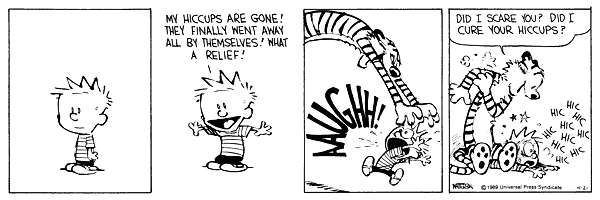
#twisted wonderland#twst#twisted wonderland monster au#twst monster au#ace trappola#deuce spade#twst dire crowley#mozus trein#divus crewel#twisted wonderland grim#twisted wonderland yuu#twst yuu
474 notes
·
View notes
Note
Hi, Hugo,~ quick 'feww' questions~<33
FOR NO REASON AT ALL- Would you wear a wedding dress to marry Vari-berri~?
How do you feel abt ppl shipping ur mom and Var's mom??
What happened to your sister??
(4. What's the fic ur a part of cuz I wanna read it)
Alright, time for more ✨️answers✨️
What I wear depends on how I'm feeling that day but yeah I would totally be open to wearing a dress at out wedding (Rapunzel would love helping me make it too)
Honestly? I kinda ship them too
Dont love talking about this one, but she left me with Donella when I was nine and I haven't seen her since (Varian hates her for it, and fun fact she's the one who helped me make Liv and was her parting gift to me)
Ooc, TheFan'sVat7k is the project lead by @theshadowyalchemist to make the show a reality (and make it a helluva lot better than Disney ever could)
Aight, gotta go pester Goggles now (cute pfp btw, love that Pic of him) later!
Blonde bitch out!
#vat7k#@goggles varian#@firecracker yong#roleplay#varian and the seven kingdoms#vat7k rp#hugo vat7k#varigo#varian and the 7 kingdoms#vat7k hugo
20 notes
·
View notes
Text

Garut Orange
(citrus nobilis, var. chrysocarpa)
Also known as keprok orange
Edit: I initially confused this for king orange, but that is actually citrus aurantium, a hybrid that citrus nobilis is a part of! They are sometimes noted as synonyms due to the citrus genus being so broad and varied that it is constantly undergoing classification changes. Apologies for any confusion!
🍊 Reblog to share a fun fruit and to increase sample size! Check out even more interesting fruits here or in the list of all polled fruits. 🍊
11 notes
·
View notes
Text

赤花満作[Akabanamansaku] Hamamelis japonica var. obtusata f. incarnata
赤花[Akabana] : Red flower
満作[Mansaku] : Witch-hazel, the genus Hamamelis
It is one variety of 丸葉満作(var. discolor f. obtusata) with red flowers. 丸葉[Maruba] means round leaves. During the flowering period, the name 赤花- is easy to recognize because there are no leaves, while the name 丸葉- is easy to recognize after the flowers have fallen and the leaves have emerged.
The long, narrow, thin petals look like short, red ribbons.
祖母の葬式の時であつた。放鳥をすると云ふので靑い竹で編んだ籠に、赤い紐を付けたのを二ツ拵へて、双方へ一羽ヅヽの山雀を入れた。さうして僕はそれを持つて行列した。其日は非常な吹雪󠄃で籠を持つて居る僕の手は殆んど凍つく樣である。籠の中の山雀は時々悲しげに囀つて居る。やがて葬式の塲所󠄃へ来たので棺の前へ籠を置いた。暫くして僧侶の引導が濟んだから僕は大勢を押し分けて出て、何氣なしに二ツの籠の戶を一度に開けたら二羽の山雀は鳴き/\彼方の杉木立の方へ飛んで行かうとする途󠄃中、何處からか一羽の鴉があらはれて山雀の一羽を啣んで去つた。風は益々吹き荒れ雪󠄃を燒捲つてヒヨーヒヨーと鳴つて居る。人足共は柩をかついで火葬塲へ行つた。死人(を燒)くうち一羽の山雀が焚火の邊に來て悲しげに鳴いて居てあつたと、葬式が濟んでから人足共は僕に話した。(丶人 )
[Sobo no sōshiki no toki deatta. Hōchō wo suru to iu node aoi take de anda kago ni, akai himo wo tsuketa no wo futatsu koshiraete, sōhō e ichiwa zutsu no yamagara wo ireta. Sōshite boku wa sore wo motte gyōretsu shita. Sono hi wa hijō na fubuki de kago wo motte iru boku no te wa hotondo itetsuku yō dearu. Kago no naka no yamagara wa tokidoki kanashige ni saezutte iru. Yagate sōshiki no basho e kita node hitsugi no mae e kago wo oita. Shirabaku shite sōryo no indō ga sunda kara boku wa oozei wo oshiwakete dete, nanigenashi ni futatsu no kago no to wo ichido ni aketara niwa noyamagara wa naki naki kanata no sugikodachi no hō e tonde ikou to suru tochū, doko kara ka ichiwa no karasu ga arawarete yamagara no ichiwa wo fukunde satta. Kaze wa masumasu fukiare yuki wo yakimakutte "hyō hyō" to natte iru. Ninsoku-domo wa hitsugi wo katsuide kasōba e itta. Shinin wo yaku uchi ichiwa no yamagara ga takibi no hotori ni kite kanashige ni naite ite atta to, sōshiki ga sunde kara ninsoku-domo wa boku ni hanashita. (Chujin)]
This was at my grandmother's funeral. They were going to release the birds, so we made two cages woven with bamboo strips with red strings attached, and put a yamagara(Varied tit, Sittiparus varius) in each of them. I took them and joined the procession. It was a terrible snowstorm that day, and my hands are(were) almost frozen holding the cages. The yamagaras in the cages sometimes is(was) chirping sadly. Eventually we arrived at the funeral site, I placed the cages in front of the coffin. After a while, the monk had finished preaching a sermon and I pushed my way through the crowd, and unintentionally opened the doors of the two cages at once, and then, the two yamagaras were flying off toward a distant cedar grove, singing. But at that time, a crow appeared from somewhere and took one of the yamagaras in its mouth and left. The wind blew harder and harder, burning the snow and is(was) making whistling noise "Hyō hyō". The carriers went to the crematorium to carry the coffin. While they were burning the dead, a yamagara came near the fire and chirped sadly, the carriers told me after the funeral. (Chujin; a younger brother of Imanari Bunpei, who lived in Niigata Prefecture with the pseudonym Bujian, an acquaintance of Masaoka Shiki) From 寸紅集[Sunkō-shū](lit. short, red stories) by 高浜 虚子[Takahama Kyoshi] and 正岡 子規[Masaoka Shiki] Source: https://dl.ndl.go.jp/pid/889126/1/96 https://en.wikipedia.org/wiki/Varied_tit
17 notes
·
View notes
Note
Heya heya my coffee king!! ☕️☕️✨
What a bustling place this is!!
Are you one of the "variations" T҉h҉e҉ ҉E҉n҉t҉i҉t҉y҉ speaks of?? Either way, forgive me if I've missed this as a question already answered, but what kind of music is your jam, my man? Any certain genre or band?
Hope your next cup of coffee astronomically amazing,
Lilia
☆☆☆☆☆☆☆☆☆☆☆☆☆☆☆☆☆☆☆☆☆☆☆☆
"Yo Yo, what's good, Lilia!" 🤙✨️
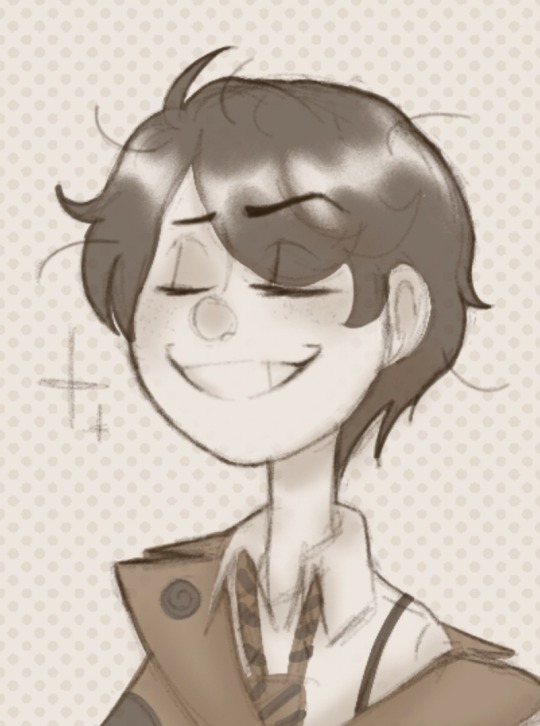
"Yeah, it's usually pretty busy around here, but you know what they say, "progress is progress, and progress must grow!" "Hehe!"
"En-ti-ty? Vari-...var...varations? Is that what you said? Not sure what those are, but uh...I'm Once-ler, aka LateNight, aka Coffee Lord, aka Ted's kick-☆ss grandad, and it's a pleasure to meet ya! "
"Uhhhh, I'm not sure what the genre is called, but I like music that sounds like this!" 👇
☆☆☆☆☆☆☆☆☆☆☆☆☆☆☆☆☆☆☆☆☆☆☆☆
#late night au#ask the late night onceler#late night onceler#onceler au#onceler#onceler fandom#the lorax fandom#the lorax#the onceler fandom
12 notes
·
View notes
Note
hello beloved leafy i am asking u 1) who do u think varigo’s favorite music artists are and 2) what’s a song/album that reminds you of each of them

does this to you
WAHOOO im about to be so self indulgent with this one thank u mikhail ily
i think var has varied music taste he likes a lil bit of everything :) HOWEVER. list of artists i think would be his favorites: paramore, flyleaf, evanescence, fka twigs and nicole dollanganger. what is the theme there you may ask i don’t know at all really these were the first ones that came to my head. i also think he’d love vocaloid stuff. oh and he’s got an obligatory soft spot for country cuz quirin loves it
meanwhile hugo’s more of a rock guy. i think his favorite artists are a perfect circle, HEALTH, sick puppies, n shinedown. three days grace too probably… and different from the others but i could see him being an interpol and iron&wine fan
as for what albums remind me of them. well u know i have to say preacher’s daughter for var if i have to pick just one i just do. and for hugo devotchka’s album how it ends makes me think of him
7 notes
·
View notes
Text
Twitter dan buraya kaçtım anlık. Çok kötü bir ortam var. Allah tan diliyorum ki iyi kalpli ve merhametli insanların sayısı çok olsun. Herkes uç fikirlere sahip. Kimse bir başkasının fikrine saygı duymuyor. Gri yok. Ya siyah ya beyaz. Kimi köpeklere ölüm diyor kimi çocuklar ölsün diyor. Fikrini beyan eden birisi tutuklanmış hakaret vari konuşmuş ama tutuklanma gerekçesi olacak bir şey değil. O kadar katil cani varken hele hiç değil. Üzüldüm o kadına. Öyle birden sinirlenip hepimiz bazı şeyler söyleyebiliyoruz. Oh olsun denir mi yani yarın bir gün bana yapılsa abartı ya da haksızlık olur diye düşüneceğimiz şeylere oh olsun dememeliyiz. Dünya burası hiçbirimizin garantisi yok. Birazcık daha iyi niyetli olmaya, iyiyi hayrı konuşmaya çalışalım lütfen. İyiliği çoğaltalım. Dünyanın belki de en çok şuan buna ihtiyacı var. Sürekli nefret, kötülük ve umutsuzluk pompalanıyor hepimize. Buna aldanmayalım. Bunların hepsi şeytanın işine gelen ve sevdiği şeyler unutmayalım.
21 notes
·
View notes
Photo
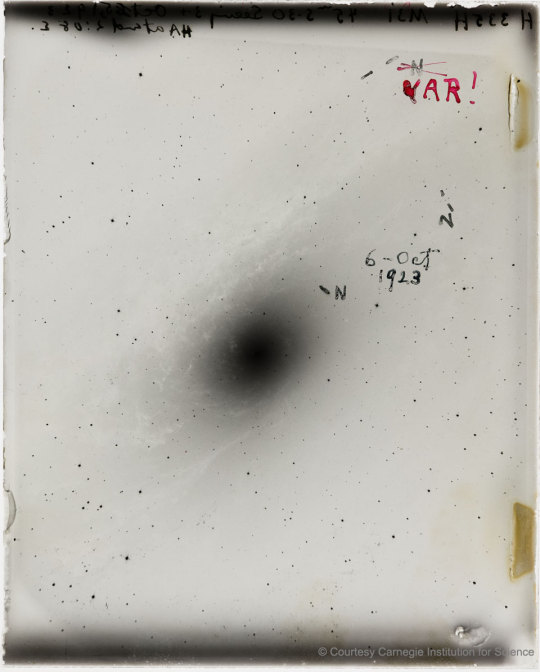
2023 October 6
Edwin Hubble Discovers the Universe Image Credit & Copyright: Courtesy Carnegie Institution for Science
Explanation: How big is our universe? This question, among others, was debated by two leading astronomers in 1920 in what has since become known as astronomy's Great Debate. Many astronomers then believed that our Milky Way Galaxy was the entire universe. Many others, though, believed that our galaxy was just one of many. In the Great Debate, each argument was detailed, but no consensus was reached. The answer came over three years later with the detected variation of single spot in the Andromeda Nebula, as shown on the original glass discovery plate digitally reproduced here. When Edwin Hubble compared images, he noticed that this spot varied, and on October 6, 1923 wrote "VAR!" on the plate. The best explanation, Hubble knew, was that this spot was the image of a variable star that was very far away. So M31 was really the Andromeda Galaxy -- a galaxy possibly similar to our own. Annotated 100 years ago, the featured image may not be pretty, but the variable spot on it opened a window through which humanity gazed knowingly, for the first time, into a surprisingly vast cosmos.
∞ Source: apod.nasa.gov/apod/ap231006.html
109 notes
·
View notes
Text
DOSSIER

LEGAL NAME | Esau Kelly Kaminski MOST KNOWN AS | Eskel NICKNAMES | Witcher, Woodsman, Grandmaster DATE OF BIRTH | Early 1170's SEX | Male GENDER | Masculine RACE | Human (Mutant) CURRENTLY LIVING | The Path, Kaer Morhen, Blue Mountains, Skellige, Saskia's Free State, Toussaint OCCUPATION | Wolf School Grandmaster Witcher: Superhuman professional wandering monster, beast, demon and undead hunter and slayer, occult detective, exorcist, curse breaker, ranger, fighter, alchemist, guildsman SPOKEN LANGUAGES | Common Speech (Fluent), Skellige jargon (Fluent) Elven (Limited), Dwarvish (Limited) EDUCATION | The Witcher School of the Wolf (Kaer Morhen) PROFICIENCY | Weapons : All. Swordsmanship, fistfighting, alchemy, bomb crafting, trap making, survivalism, tracking, hunting, archery, marksmanship, horse riding, stealth, lockpicking, cunning, subterfuge, arcane/occult knowledge, basic magic HAIR COLOR | Brown EYE COLOR | Black serpentine pupils, glowing yellow irises, white sclera (Formerly Blue Eyes) SCARS | Numerous and varied all over body, including blade scars to his face and a blade stab scar on his gut from his Child of Surprise, deep claw scars along forearms and back, Bruxa, Succubus and Water Hag bites around neck and collar, and more HEIGHT | 6'2"- 6'4" range RELATIONSHIPS | Vesemir (Former Mentor/Teacher), Geralt (Best Friend/Brother Witcher), Lambert (Friend/Fellow Witcher), Princess Deidre Ademeyn (Former Child of Surprise), Sabrina Glevissig (Former Savior, Enemy and Lover), Triss Merigold (Close Friend/Trusted Ally), Yennefer of Vengerberg (Reluctant Ally), Coën (Former Griffin School Witcher Friend), Ciri (Ally), Leo (Former Trainee/Student) Scorpion (Horse of Surprise), Lil' Bleater (Pet Goat), Beowulf (Former Pet Skelligan Warg Wolf) SEXUAL ORIENTATION | Heterosexual RELATIONSHIP STATUS | Single

LEGAL NAME | Unknown MOST KNOWN AS | Letho of Gulet NICKNAMES | Witcher, The Kingslayer, Assassin of Kings DATE OF BIRTH | Unknown: At least decades before the 1230's SEX | Male GENDER | Masculine RACE | Human (Mutant) CURRENTLY LIVING | The Path, Zerrikania, Tir Tochair Mountains OCCUPATION | Viper School Witcher: Superhuman professional wandering monster, beast, demon and undead hunter and slayer, assassin for hire, occult detective, exorcist, curse breaker, ranger, fighter, alchemist, guildsman SPOKEN LANGUAGES | Common Speech (Fluent), Nilfgaardian (Fluent), Elven (Fluent) Dwarvish (Fluent) Gnomish (Fluent), Halfling (Fluent) EDUCATION | The Witcher School of the Viper (Gorthur Gvaede) PROFICIENCY | Weapons : All. Swordsmanship, fistfighting, alchemy, bomb crafting, trap making, survivalism, tracking, hunting, archery, marksmanship, horse riding, stealth, lockpicking, cunning, subterfuge, political savvy, conspiracies, spying, assassinations, arcane/occult knowledge, basic magic (Quen Sign especially) HAIR COLOR | Brown (Shaven) EYE COLOR | Black serpentine pupils, glowing yellow irises, white sclera (Formerly Steely Grey Eyes) SCARS | Numerous and varied all over body, including most prominently his head where a Nilfgaardian soldier tried to scalp him with a two-pronged guisarme during the Siege/Fall of Gorthur Gvaede HEIGHT | 6'8"+ range RELATIONSHIPS | Serrit and Auckes (Former Fellow Viper School Witcher Friends), Geralt of Rivia (Friend/Ally), Yennefer of Vengerberg (Former Protectorate), Vernon Roche (Enemy), Iorweth (Former Ally and Pawn), Sheala de Tancarville (Former Lover, Pawn and Enemy), Emperor Emhyr var Emreis (Former Client and Enemy) SEXUAL ORIENTATION | Heterosexual RELATIONSHIP STATUS | Single
Tagging @gcldenlioness , @starwrittenfates (Any Muse), @fallesto (Any Muse), @swordluck , @frombehindpaleeyes , @torntruth (Any Muse) and anyone else who wants to do it.
11 notes
·
View notes
Text
How big is our universe? This question, among others, was debated by two leading astronomers in 1920 in what has since become known as astronomy's Great Debate. Many astronomers then believed that our Milky Way Galaxy was the entire universe. Many others, though, believed that our galaxy was just one of many. In the Great Debate, each argument was detailed, but no consensus was reached. The answer came over three years later with the detected variation of single spot in the Andromeda Nebula, as shown on the original glass discovery plate digitally reproduced here. When Edwin Hubble compared images, he noticed that this spot varied, and on October 6, 1923 wrote "VAR!" on the plate. The best explanation, Hubble knew, was that this spot was the image of a variable star that was very far away. So M31 was really the Andromeda Galaxy -- a galaxy possibly similar to our own. Annotated 100 years ago, the featured image may not be pretty, but the variable spot on it opened a window through which humanity gazed knowingly, for the first time, into a surprisingly vast cosmos.
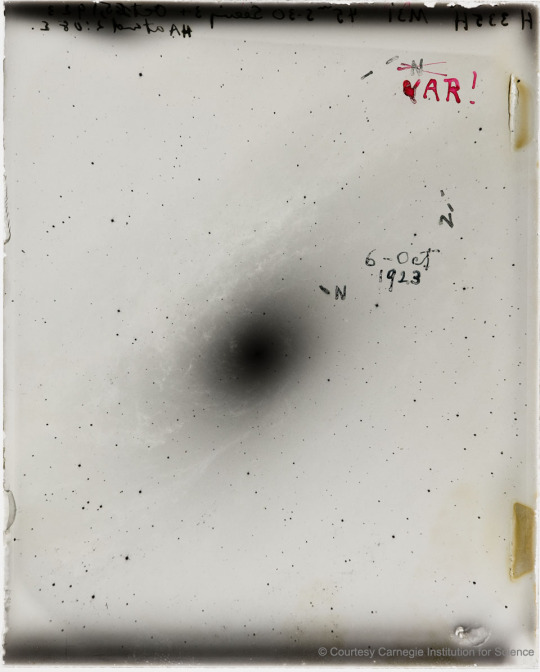
#hubble space telescope#hubble#edwin hubble#nasaastronaut#nasa#nasawebb#planetary nebula#nasa picture of the day#nasa photos#astronomy#astronomers#universe#astrophotography#astrophysics#outer space#nasa jpl#planetary science#space science#science facts#science#astronomy photography#astronews#astrography#astro notes#astronauts#astro placements#astro posts#astrophobia#astro community#astro observations
55 notes
·
View notes
Text
I’m glad people seem to be liking Varius so far, I’ve spent a lot of time doing research in order to incorporate it into her design and overall character, and I’m honestly at a loss for where exactly to begin with telling y’all more about her cause there’s just so much! I guess I’ll share a few basic details to get started though
While only a few people have begun to use it so far, she actually has a nickname: Vari! It’s pronounced the same way as her full name (Var-ee-us) but if you were to just take off the “us” sound at the end. At this point, it’s mainly the zoras that she’s gotten the closest to in her time at the domain that call her that
She very recently hit a century old (meaning she’s a young adult)
I don’t have a specific height yet but she’s definitely on the shorter side amongst the adults in the domain, though definitely tall enough to be recognized as an adult rather than a teenager. Though she’s shorter than a lot of them, it serves her well in regards to her mobility and ability to maneuver when swimming, which is especially beneficial given her job, and she’s not self-conscious of her height or anything
I’d imagine that she doesn’t come from the same domain as Yona and her attendants did because with the general depth that flashing tilefish (as well as most other tilefish) commonly live at, they actually need to be slowly adjusted to the change in pressure when they’re collected for aquariums. It was a bit of a process for her getting used to living higher up than where she lived as a kid
That said, she’s actually a bit more resilient to physical changes than others like her and she has a surprisingly strong immune system for a flashing tilefish (flashing tilefish can be tricky to get settled into aquariums because they need really stable conditions). Most of her trouble with adjusting to living in the domain has been emotionally, and the stress has been more mental than physical
Like I said, I have plenty more thoughts about her but just don’t know where to start with talking about it all, so if you guys have any questions for me about her, please feel free to ask, I’d love to answer them!! :D
4 notes
·
View notes
Text
Belə bir xüsusiyyət var - hansısa geyimi ilk dəfə har geymisənsə, hər geyinəndə oranı xatırlayırsan. Bir filmi ilk dəfə kiminlə və harda izləmisənsə, musiqini kiminlə və harda dinləmisənsə, illər keçsə belə, o filmə təkrar baxanda, o musiqini təkrar dinləyəndə o ilk adam, o ilk məkan mütləq xatırlanacaq.
Varis - Uzağdan gələn yağış
21 notes
·
View notes
Text
tumblr a wifiye bağlıyken girebiliyorum sadece artık neden böyle bir sorun var ve niye vari geçtim vpnle mobil veriden giriyorum öyle bi sikerim sorununu en kısa nasıl çözerimlerdeyim anladınız mı
2 notes
·
View notes